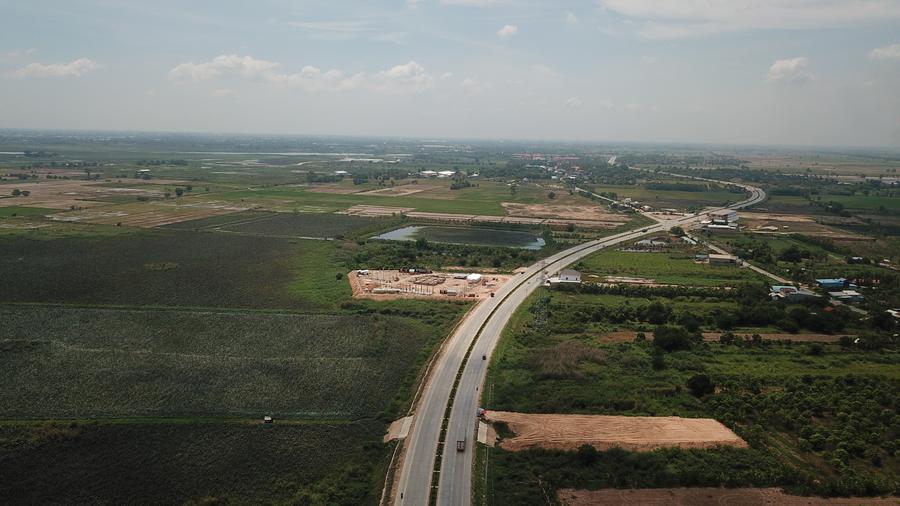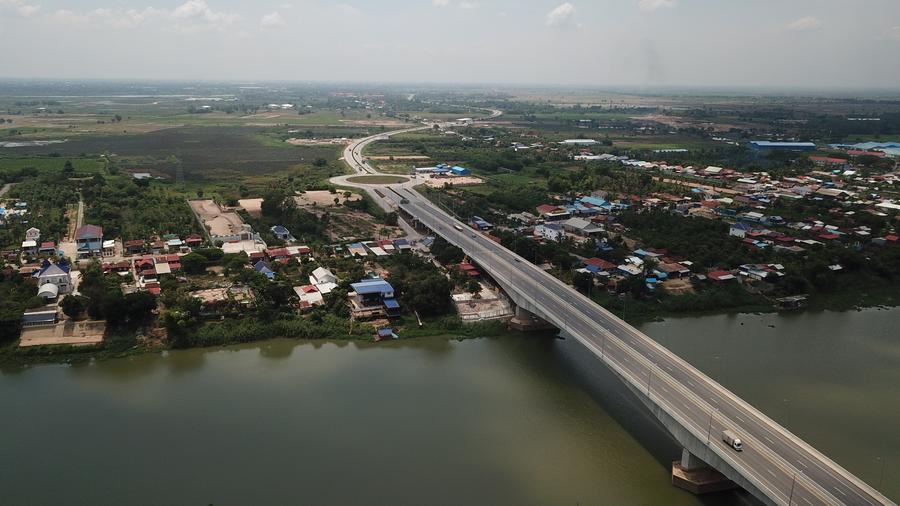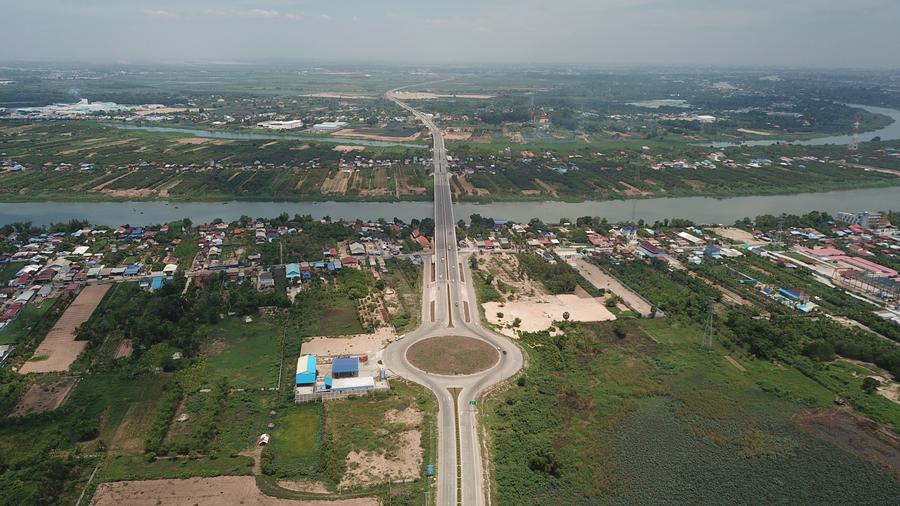An aerial drone photo taken on June 4, 2024 shows part of the third ring road in southern suburb of Phnom Penh, Cambodia. (Photo by Van Pov/Xinhua)
The China-funded third ring road in southern suburb of Cambodia's capital Phnom Penh, open to traffic in August 2023, facilitates travel and transportation of goods and contributes to improving the livelihood of local residents.
PHNOM PENH, June 6 (Xinhua) -- Stretching from Highway 1 to Highway 4, the China-funded third ring road has transformed the once-tranquil southern suburb of Phnom Penh, capital of Cambodia, into a bustling suburban area.
Open to the public in August last year, the 53-km road, along with two river bridges and two flyovers, has not only facilitated travel and transportation of goods, but also importantly contributed to improving the livelihoods of local residents along the road.
Nguon Vannara, a 45-year-old owner of a cafe along the third ring road, said the development of the road has turned the area, once farmland, rice fields, and degraded forests, into a bustling suburban area.
She said that after the road was built, many shops and businesses were set up along the route.
"I'm happy because this road not only makes it easier to travel, but also contributes to national economic development," she told Xinhua on Tuesday.
"Residents along the road can now open shops, with a better business environment," she added.
An aerial drone photo taken on June 4, 2024 shows part of the third ring road in southern suburb of Phnom Penh, Cambodia. (Photo by Van Pov/Xinhua)
Vannara, who was formerly a farmer, said since the road was built, she has run a cafe, which has significantly improved her family's living conditions.
The mother of four children is confident that her business will grow bigger in the future as more people have come to live along the road.
Sim Channy, a 37-year-old grocer along the road, said her house was previously close to forests, but when the road was built, she could run a grocery store, which has much improved her living conditions.
"It was very difficult before this road was built. We had to take a detour to another way which was full of mud. So when there was rain, local people rarely traveled anywhere," she told Xinhua.
Channy said currently many local people are running shops and businesses along the road.
"I was previously unemployed, but now when this road was built, my husband and I have established a decent business," she said.
An aerial drone photo taken on June 4, 2024 shows part of the third ring road in southern suburb of Phnom Penh, Cambodia. (Photo by Van Pov/Xinhua)
Khom Sokhe, a 31-year-old motorcycle mechanic along the road, said the previous road was narrow and quite difficult to travel to the city center.
"Previously, traveling to the Phnom Penh city center took a very long time due to poor road conditions, but after this ring road was built, it has helped shorten our travel time by 50 percent," he told Xinhua. "Our travel is easier and our businesses are better than before."
Thong Mengdavid, a lecturer at the Institute for International Studies and Public Policy, a school of the Royal University of Phnom Penh, said the third ring road was another fruit of close cooperation between Cambodia and China under the Belt and Road Initiative (BRI).
"The road has not only eased traffic jams in the city center, but also contributed to promoting business, trade, investment, logistics and tourism, so local people will greatly benefit from it," he told Xinhua.
Mengdavid said under the BRI, China has undertaken many mega projects such as roads, bridges, Sihanoukville Special Economy Zone, hydropower plants, Phnom Penh-Sihanoukville Expressway, and Siem Reap Angkor International Airport.
"These BRI flagship projects have played a crucial role in supporting Cambodia's socio-economic development and poverty reduction through creating hundreds of thousands of jobs," he said.







 A single purchase
A single purchase









